Types of Opals
Opals are one of the most captivating gemstones, admired for their unique play-of-color, which creates a breathtaking dance of shifting hues. These stunning gems are found in various types, each differing in body tone, transparency, and color vibrancy. Some opals boast a dark and dramatic appearance, while others radiate a soft, milky glow or even fiery brilliance. Below, we explore the most well-known types of opals, their characteristics, origins, and what makes each one unique.
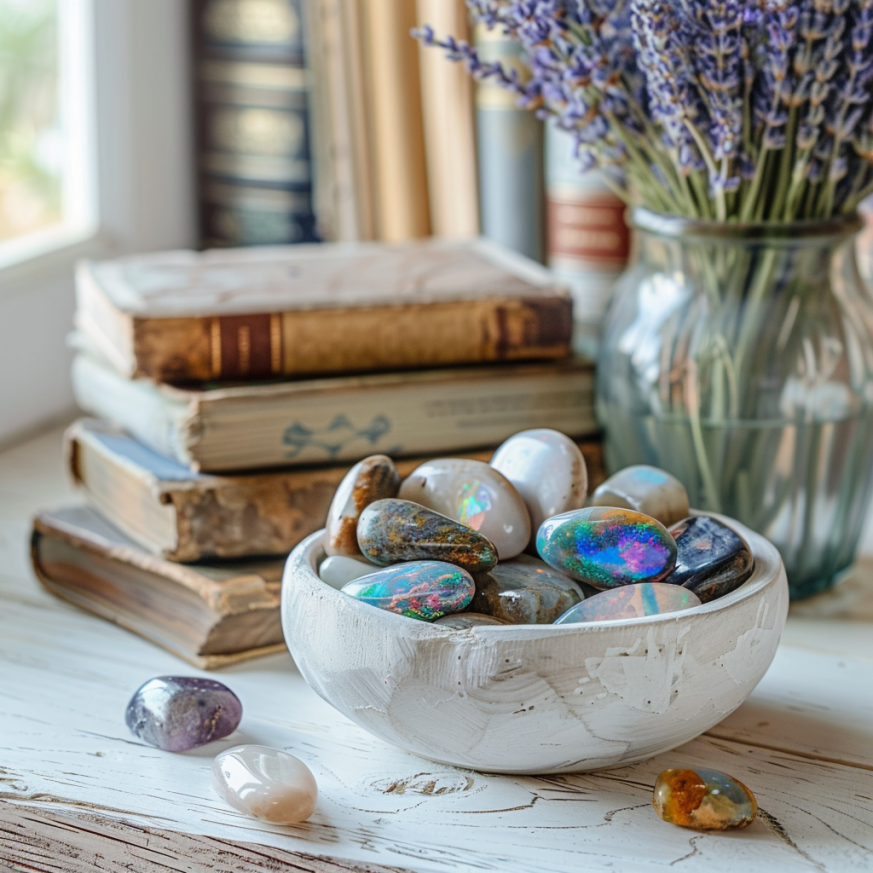
Black Opal – The Rarest and Most Valuable Opal
Black opals are the most valuable and sought-after opal variety due to their intense play-of-color set against a deep, dark background. This dark body tone, ranging from dark gray to jet black, enhances the vibrancy of the spectral colors, making them appear more dramatic and striking.
These rare gemstones are primarily sourced from Lightning Ridge, Australia, which is the only major source of high-quality black opals. The vivid flashes of blue, green, red, orange, and purple on a dark background give black opals an almost mystical appearance, making them highly desirable for fine jewelry.
Since black opals are rare, they often command high prices, especially if they exhibit strong, broad, and multi-directional play-of-color with bright hues. Collectors and jewelers regard them as investment-worthy gemstones due to their increasing rarity.
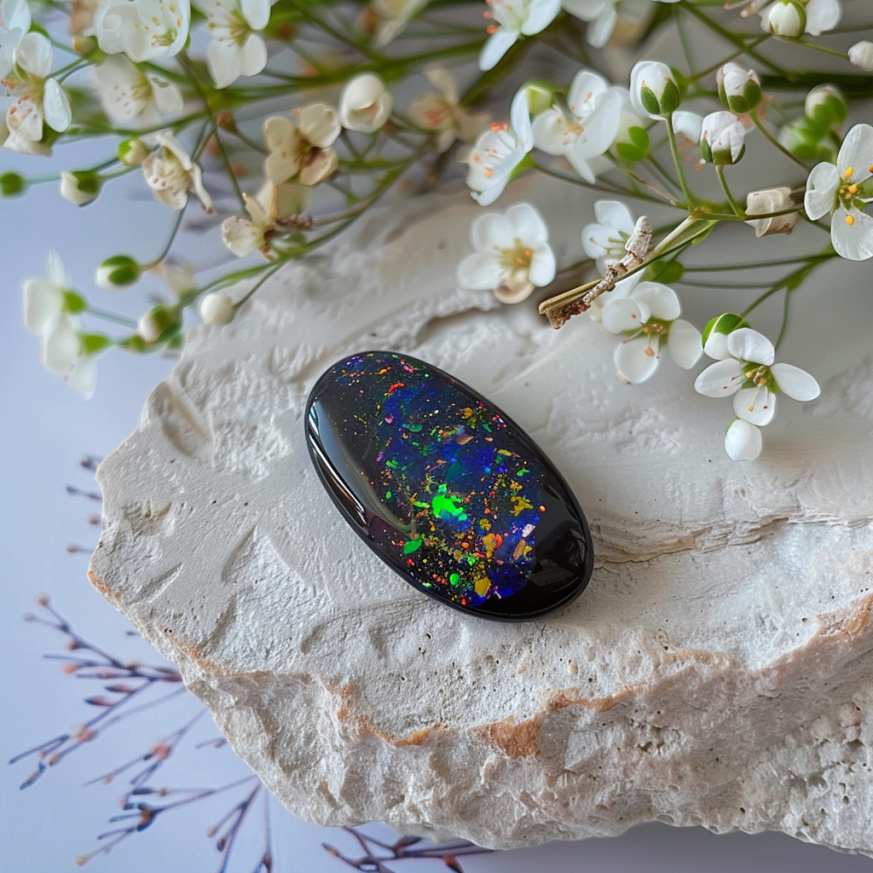
Boulder Opal – The Natural Art of the Earth
Boulder opals are a stunning variety of opals that naturally form within ironstone host rock. Unlike other opals that are fully separated from their surrounding rock, boulder opals remain attached to their ironstone backing, which serves as a natural enhancer of their play-of-color.
These opals are predominantly found in Queensland, Australia, and are known for their earthy yet vibrant appearance. Their thin layers of opal embedded within the host rock create one-of-a-kind patterns, making each boulder opal unique.
Boulder opals come in various shapes due to the way they form in cracks and crevices of the ironstone, making them ideal for custom jewelry. Their durability is higher compared to other opal varieties because of their ironstone backing, making them a more practical choice for everyday wear.
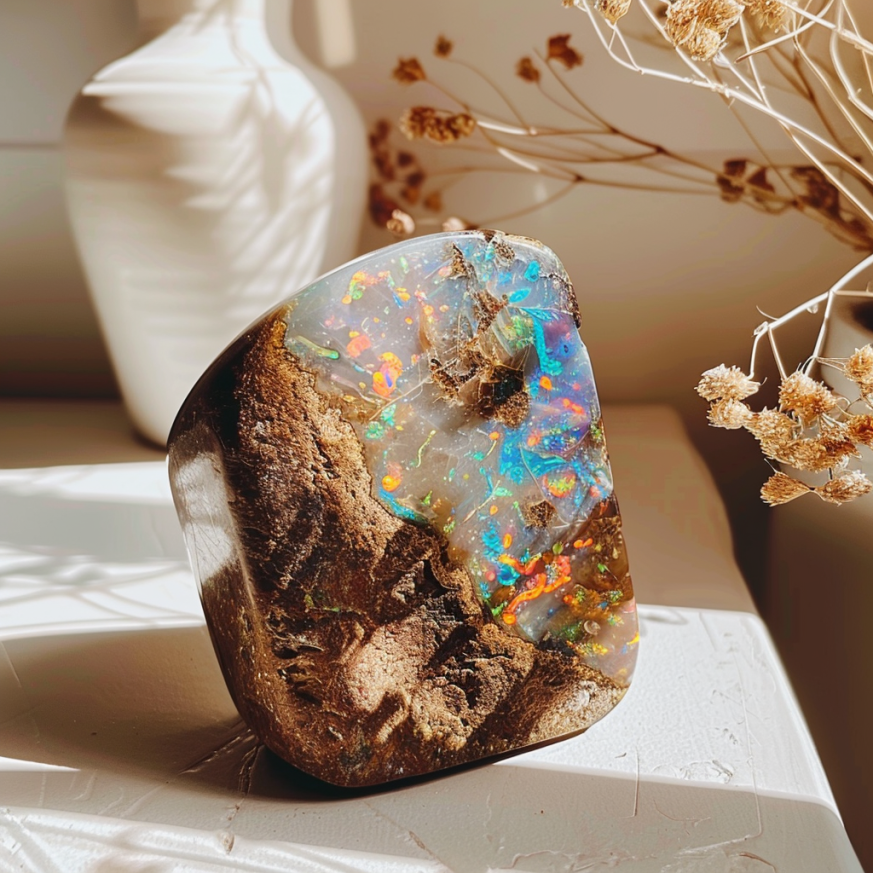
Crystal Opal – The Most Transparent Opal Variety
K11256| play | right| “2.86 Ct. Ethiopia No Enhancement Multi Color Opal” Crystal opals are semi-transparent to fully transparent, allowing light to pass through, which enhances their play-of-color. Unlike black or white opals, which have opaque body tones, crystal opals showcase a mesmerizing depth and a striking display of spectral colors.
Crystal opals can have either light or dark body tones, with the most valuable specimens displaying strong, vivid, and broad flashes of color. Their transparency gives them an ethereal glow, and they are often cut into cabochons to maximize their depth and brilliance.
These opals are found in Australia, mainly in Coober Pedy and Lightning Ridge, as well as Ethiopia. Ethiopian crystal opals, in particular, have gained popularity for their hydrophane properties, meaning they can absorb water and temporarily change appearance when exposed to moisture.
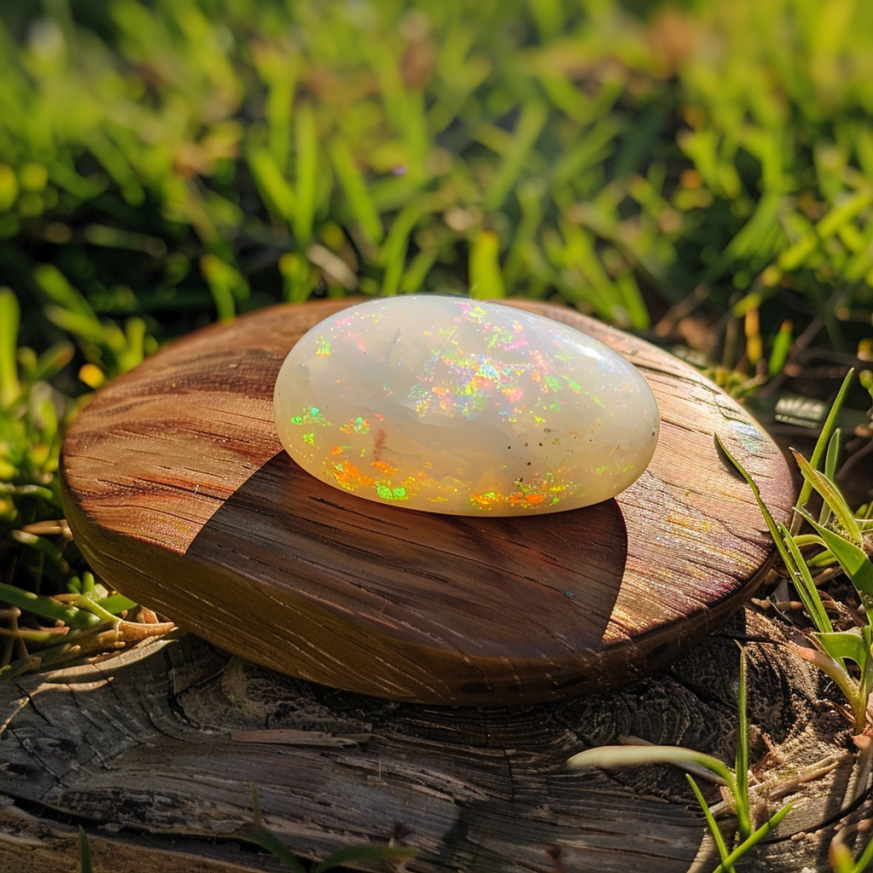
Fire (Jelly) Opal – A Fiery Glow Without Play-of-Color
K1406| play | right| “21.51 Ct. Australia No Enhancement” Fire opals, also called jelly opals, are known for their bright and intense warm colors, including shades of orange, red, and yellow. Unlike other opals that display play-of-color, fire opals often have a single, uniform body color without the shifting hues typically associated with opals.
The majority of fire opals are sourced from Mexico, particularly from mines in Querétaro. These gems can be transparent to translucent, with some rare specimens showing flashes of green or blue within their fiery body.
Since fire opals lack the traditional play-of-color of other opals, they are often faceted rather than cut into cabochons, similar to faceted gemstones like topaz or citrine. Their intense warm glow makes them a favorite for unique jewelry designs.
Fire Opal – The Rare Combination of Fire and Play-of-Color
Fire opals differ from jelly opals in that they sometimes exhibit play-of-color within their orange or reddish body tone. These opals are highly prized when they display both the fiery body color and flashes of green, blue, or purple, making them one of the most unique opal varieties.
The best fire opals come from Mexico, but some can also be found in Brazil and Ethiopia. The presence of play-of-color in a fire opal can significantly increase its value, especially if the flashes are broad and vibrant.
Due to their unique structure, fire opals require careful handling, as they can be prone to cracking if exposed to sudden temperature changes or excessive drying. They are often used in statement jewelry pieces to showcase their burning, glowing beauty.
Semi-Black Opal – The Affordable Alternative to Black Opals
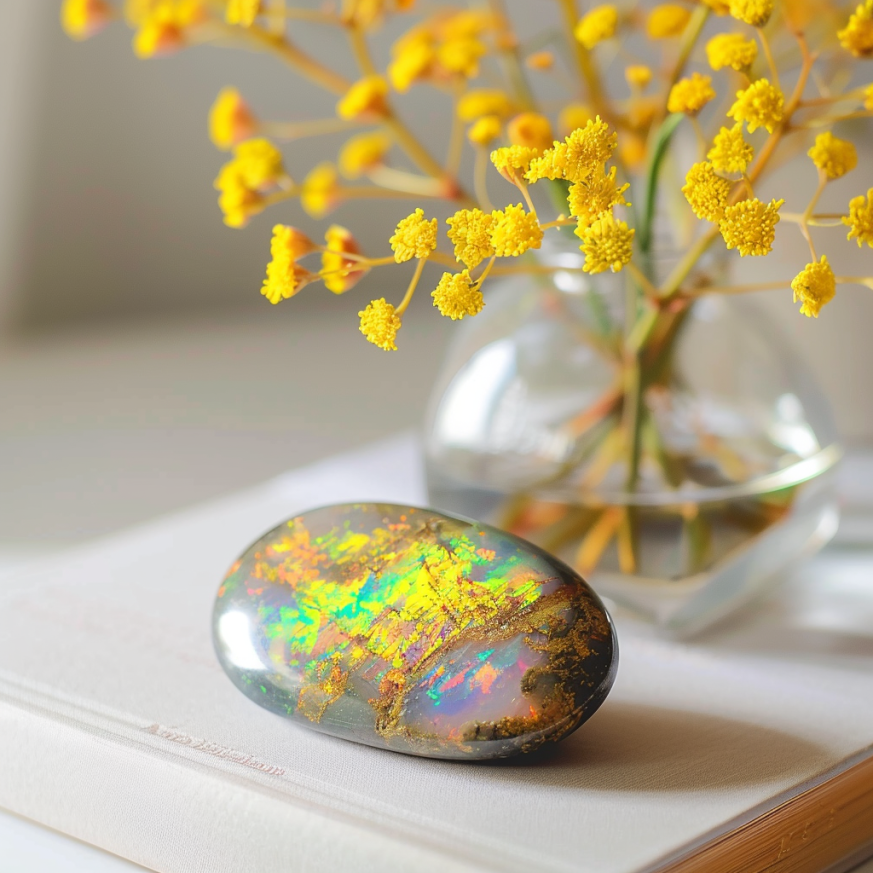
Semi-black opals, also known as dark opals, share similarities with black opals but have a slightly lighter body tone, typically ranging from medium to dark gray. This medium-dark background enhances the play-of-color, though not as intensely as true black opals.
Found mainly in Lightning Ridge, Australia, semi-black opals offer a more affordable alternative to black opals while still maintaining a stunning visual appeal. These opals can display bright flashes of red, blue, green, and purple, making them a great choice for collectors seeking high-quality opals without the steep price of black opals.
White Opal – The Classic and Most Abundant Opal
White opals, also known as milky opals, are the most common type of opal. They have a light, opaque, or white body tone that provides a soft, pastel-like play-of-color. Unlike black or boulder opals, where the dark background intensifies the color flashes, white opals have a more subtle and delicate color display.
These opals are primarily sourced from Coober Pedy, Australia, which is known as the “Opal Capital of the World.” While white opals are more affordable than black opals, high-quality specimens with vivid and large patches of play-of-color are still highly valued.
Due to their soft and dreamy aesthetic, white opals are often used in romantic and vintage-inspired jewelry designs. Their charm lies in their gentle beauty and soft iridescence, making them a classic choice for opal lovers.
Conclusion
Opals are one of the most diverse gemstones, available in a wide range of colors and variations. From the deep, mystical allure of black opals to the earthy and rugged beauty of boulder opals, and the warm, fiery brilliance of Mexican fire opals, each type offers a unique experience.
Understanding the different types of opals can help you choose the perfect opal that matches your style, budget, and preference. Whether you’re looking for an investment piece or a mesmerizing jewelry gemstone, opals remain one of nature’s most enchanting treasures.
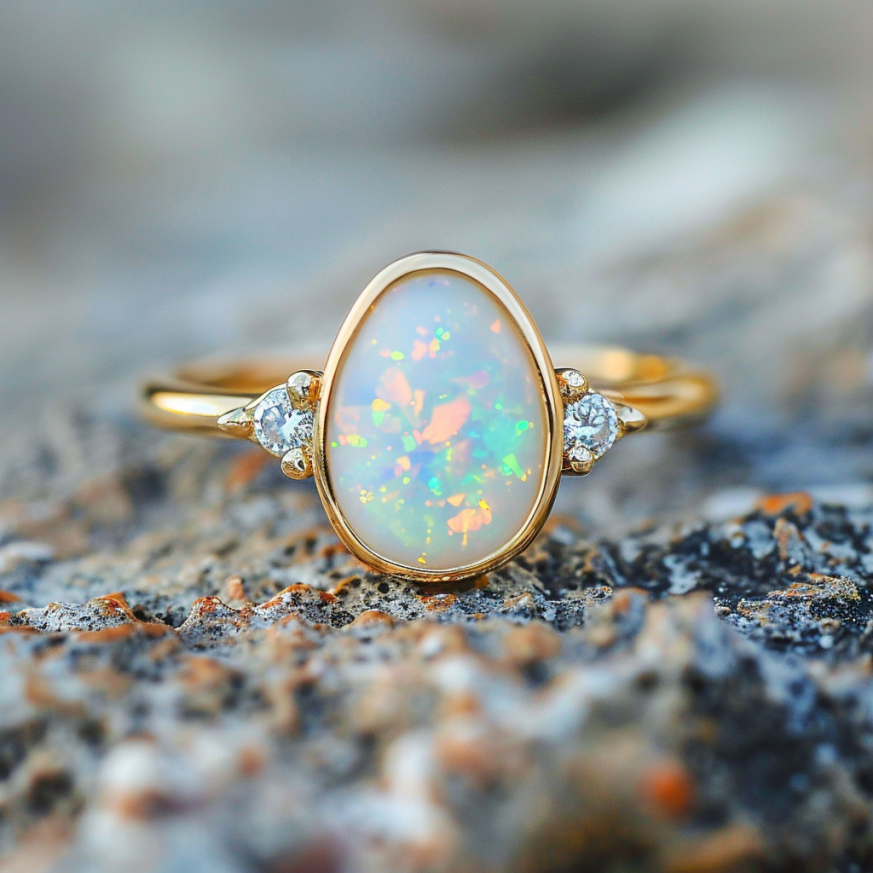
For more information on how opals are treated and enhanced, visit our guide on Opal Treatments and Enhancements.
